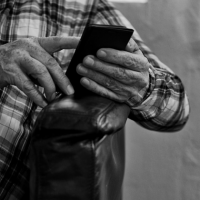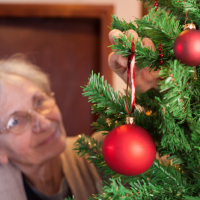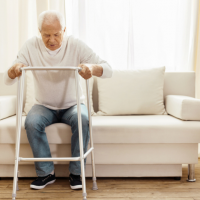
Over thirty-four million Americans are caregivers to family members, and many of them do so from a distance of an hour away or more. Thanks to advances in technology, assisting seniors from afar is getting easier.
Statistics show that the American population is aging, and the oldest of the senior population is the fastest-growing group. Naturally, members of that demographic often suffer from debilitating health issues, and care for those issues is expensive. Most older Americans prefer to age in place, and with technological products and services, it is becoming easier for caregivers to arrange that, and even saves money over alternatives. According to The Economist, using goods and services to help seniors stay home can improve quality of life and helps prevent expensive hospital stays. Here are some of the available options.
Products
Wearables. Wearable devices that resemble traditional wristwatches provide seniors with activity trackers, medication reminders, and safety assistance. Lively offers a safety watch, and Wisewear offers stylish bracelets in a few different designs to suit a user’s sense of style.
Voice-activated devices. Gadgets such as the Amazon Echo allow seniors to turn on and off lights, change the temperature on the thermostat, and turn on and off garden sprinklers.
Apps. Professionals from Provider Magazine recommend apps like CareZone to help caregivers stay organized and coordinated with family members, doctors and other providers. Users can manage medications, track health conditions, coordinate appointments, organize health care information such as insurance and physicians, and communicate by sharing files, photos and notes.
GreatCall Link monitors daily activity and alerts family members when something is wrong. It also can notify highly-trained emergency personnel, if needed.
The National Alzheimer’s Center created Balance especially for Alzheimer’s caregivers. This app facilitates coordinating between multiple caregivers and tracking common behavioral and emotional symptoms, and keeps caregivers informed of related health news.
Monitoring systems. These systems employ sensors in seniors’ homes to track their daily activity. Sensors can be attached throughout the home to various objects like doors, appliances, cabinets, medicine chests and bedding. They learn normal activity patterns and alert caregivers if seniors deviate, such as wandering outside late at night or not making breakfast in the morning. The GrandCare System is one that the experts at AgingCare suggest.
Services
Some cities lend themselves particularly well to aging in place, thanks to the technology-based services they offer. Connecting with various agencies can assist elderly people with remaining independent. Commuting services such as Uber allow seniors to run errands and visit friends. Pet care can be hired through websites such as Rover.com, and lawn care can be arranged from services such as Porch. If a senior can’t manage groceries alone, there are shopping and delivery services like Instacart, and in-home care can be arranged through providers such as CareLinx. For seniors uncomfortable with technology, a family member or friend can make arrangements for them. According to the experts at Redfin, seniors can save money with this kind of arrangement:
“For seniors who need basic assistance and want to remain at home, these services are an attractive option. And, depending on the amount of care required, they can be a more affordable option as well. For example, in Washington D.C., a resident could spend $3,000 on care services and $2,787 on their mortgage, and still spend less than the $5,933 it would take to live in an assisted living facility.”
Aging in place is getting easier
The population is growing older and the vast majority of people prefer to age in place. Caregivers are connecting with products and services to make this a possibility, improving quality of life for seniors and reducing hospital visits. In the long run, seniors and their support system save money. Thanks to these advances, life is getting better for the elderly and their caregivers.



